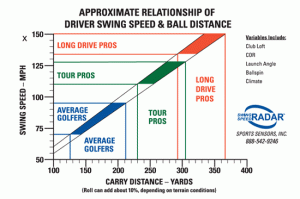I’ve been waiting for the dust to settle somewhat on the golf ball rollback, but the news keeps changing every day as more and more opinion and speculation keeps coming out, so I if I don’t comment now, I never will.
What I can say is that the USGA is up to its usual stupidity, the kind it exercised for years in screwing up the U.S. Open with the way it prepared and conditioned the course.
Then there was the anchored putting fiasco.
Now this.
We really have to take a wait-and-see approach because the rollback doesn’t take effect for us until 2030. The deal might not yet be done.
(New golf ball testing rules come into effect in 2028, and the shorter ball comes into effect for everyone in 2030.)
The speculation is that the carry distance of the average male golfer will shorten by 5 yards, the average female golfer by 1 to 3 yards.

(This image is a screen print. Links are not active.)
The second shot would hardly be affected. They say.
What bothers me is that nothing I read about the comment period refers to comments they got from millions of recreational golfers, who are really what supports golf in this country.
Because they didn’t ask us.
Oh, they asked us about anchored putting, and they apparently didn’t like the comments they got, so we got left out of this discussion.
We like things the way they are. We are not the reason that courses are becoming obsolete because we hit the ball that far. We just don’t.
Back in the day when I was playing my best, my total driving distance was at 235 yards. Once a month I might pop one out there 250 and say to myself, “How did that happen?”
With that distance off the tee, a course of 5,900 yards fit perfectly.
So what am I going to do now that I’m much shorter than that?
When Bridgestone discontinued the ball I use, the e5, I bought as many as I could find. I have twenty boxes of them in my basement.
I would suggest that in 2029 you buy as many of the ball you use then and play them to your heart’s content from 2030 forward.
And then tell the USGA that even though they are in charge of “the game”, you are not a part of “the game” they are in charge of any more.
Because all you want to do is go out and have fun.
Which is what golf is for the millions of us.
P.S. You want my solution to the distance problem at the elite level (Because that’s the only level where distance is a problem)?
Make the pros play a balata ball.
Instead of their wild drives ending in the deep rough, they will end up two fairways over.
That will put more of a premium on straight rather than far, which should cut down distance from the insane to the mere ridiculous.


